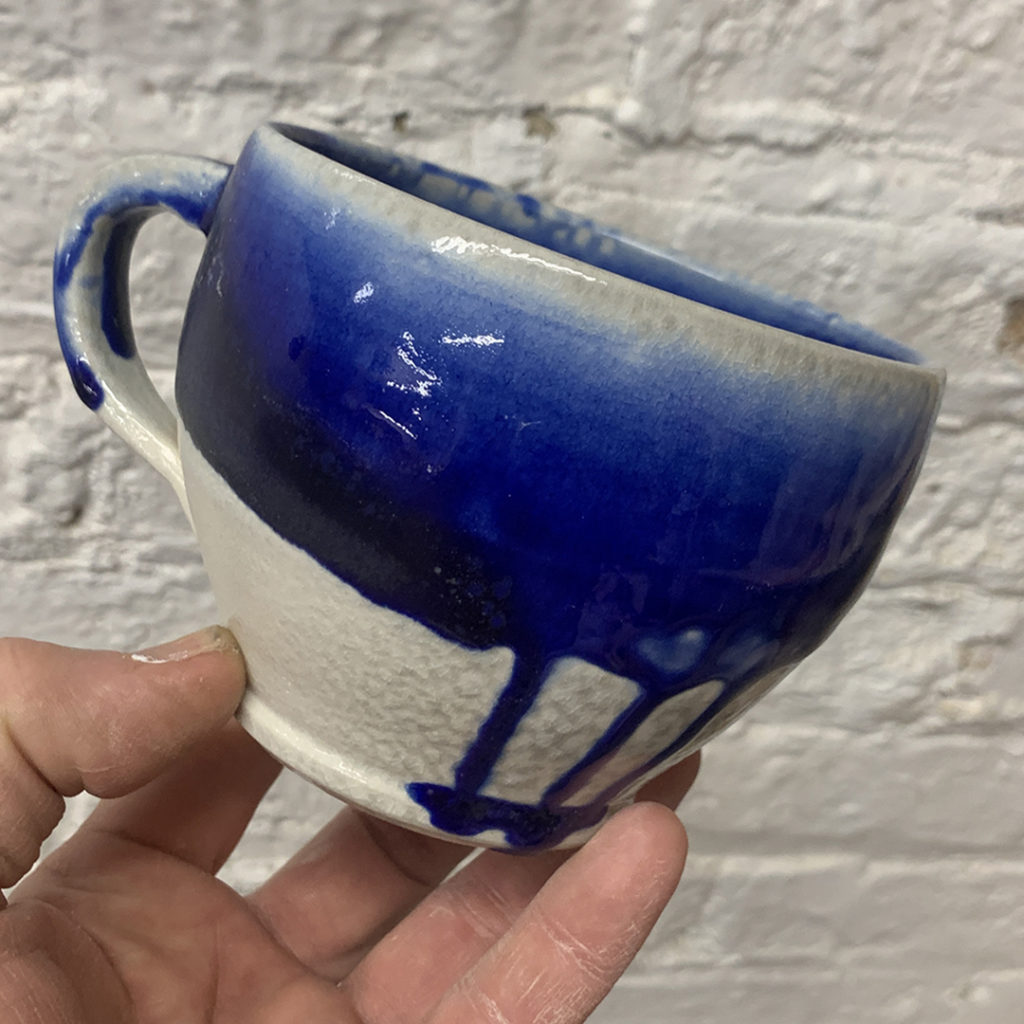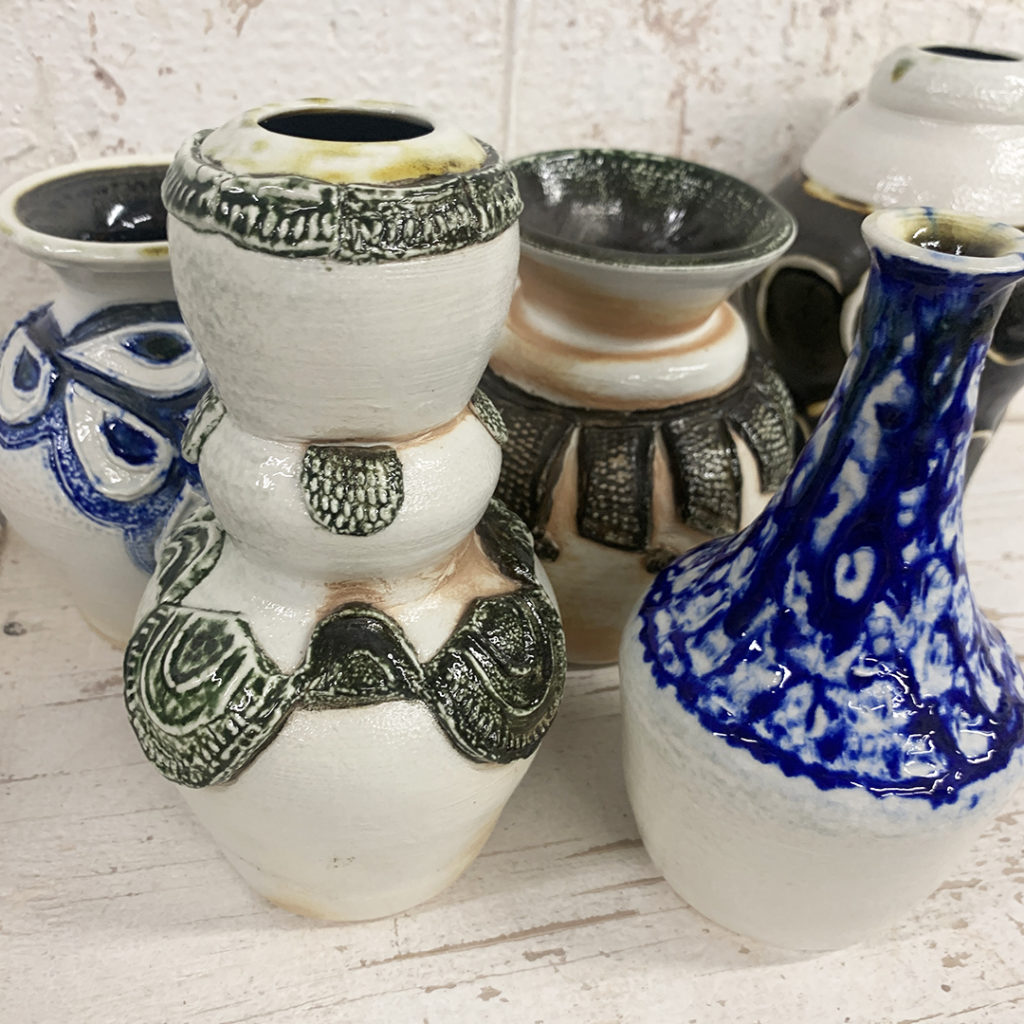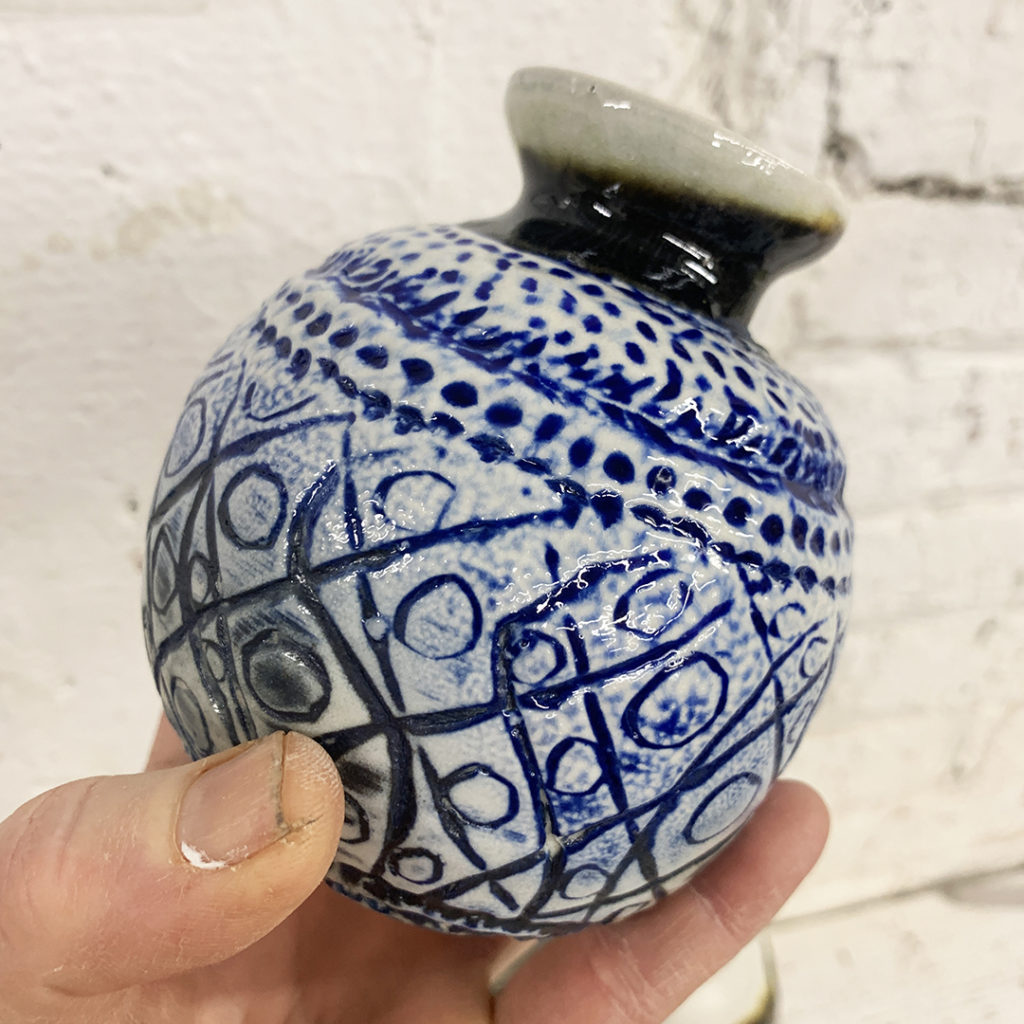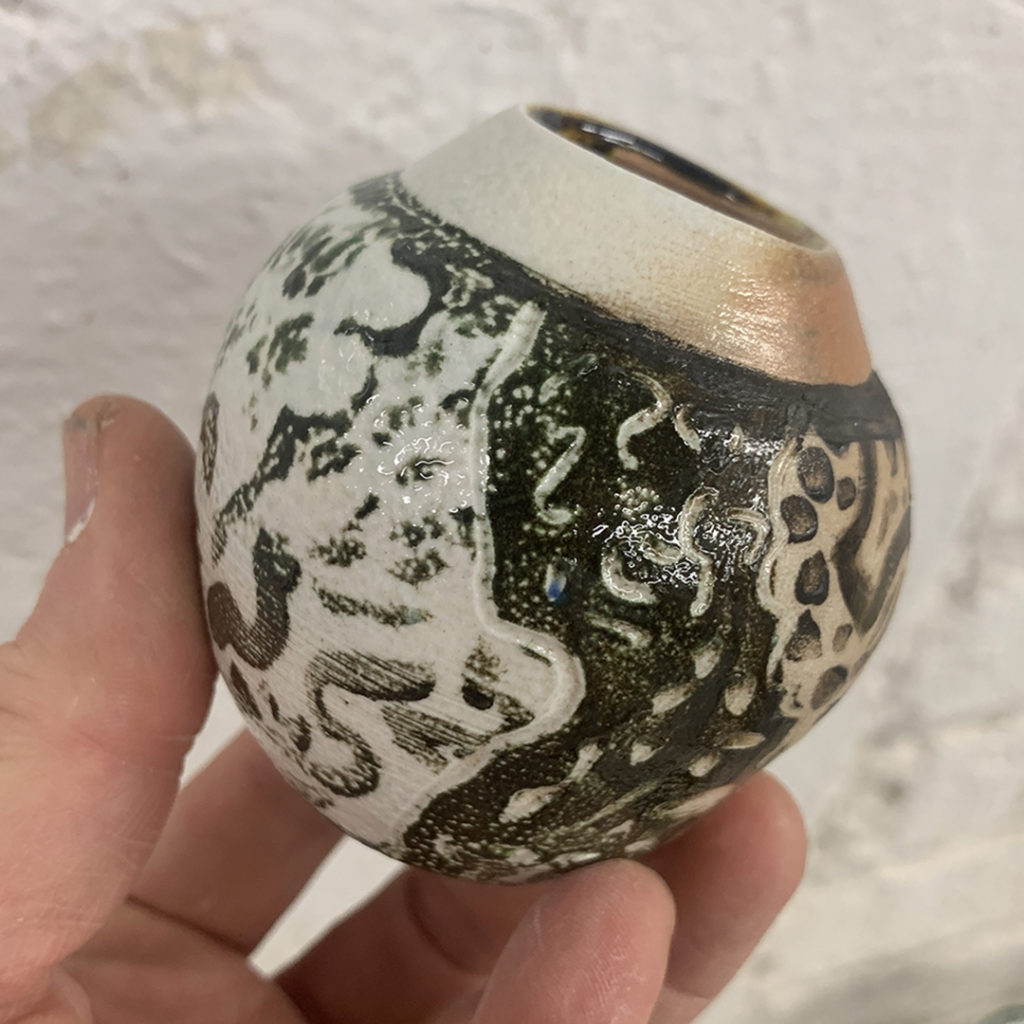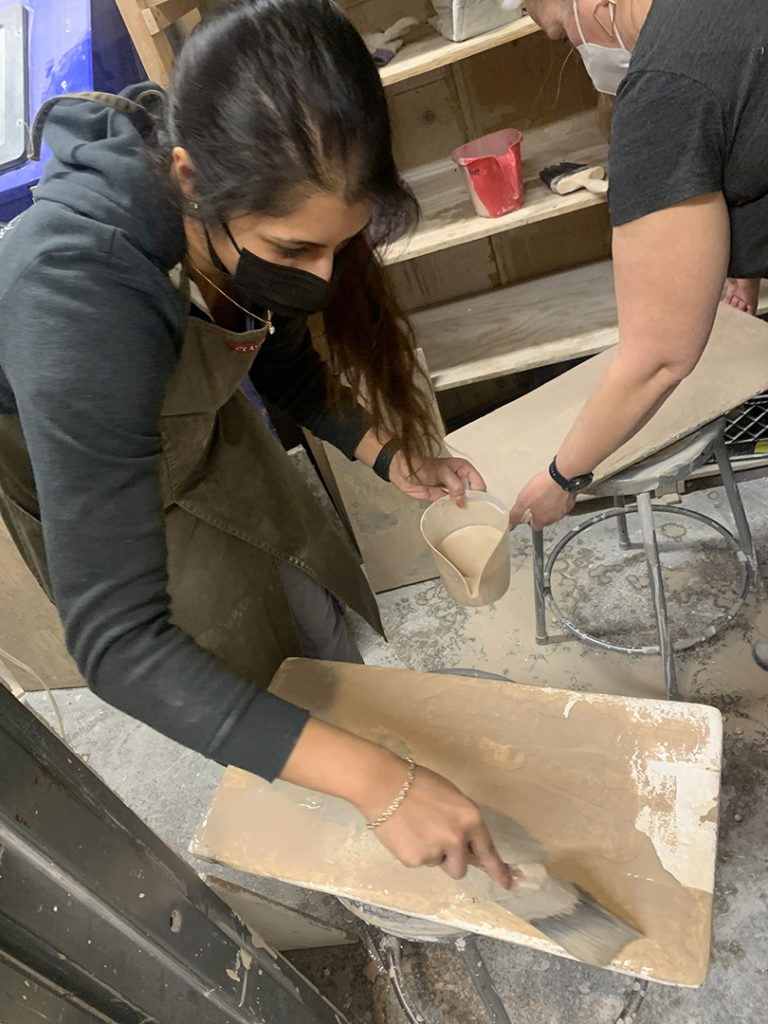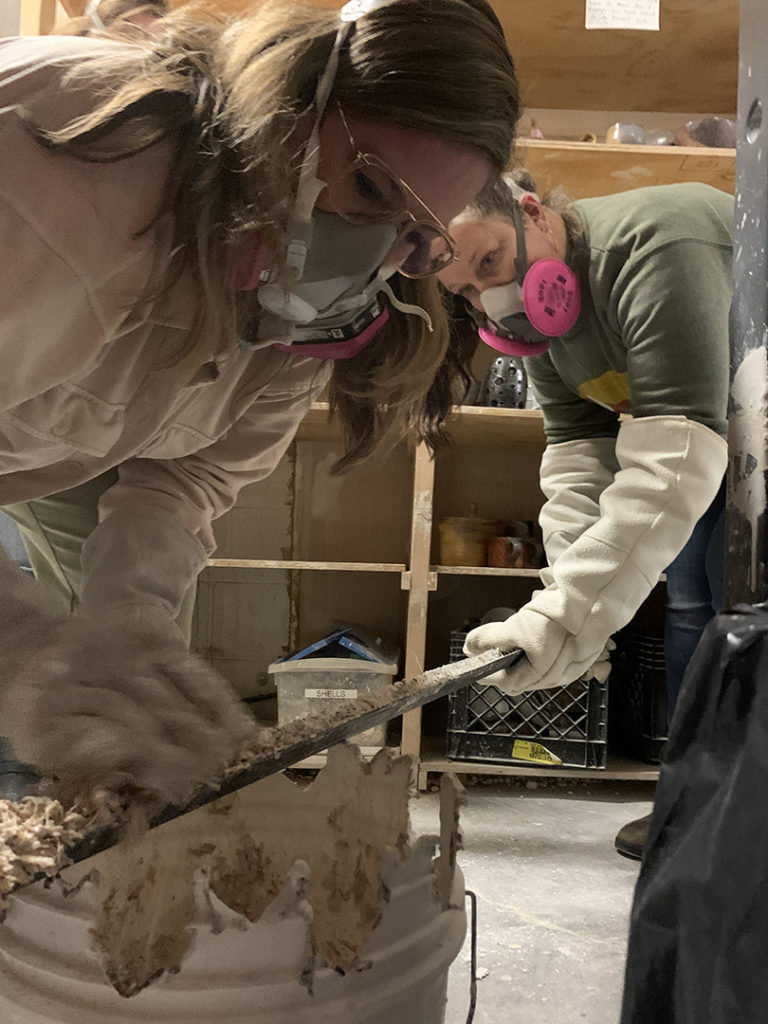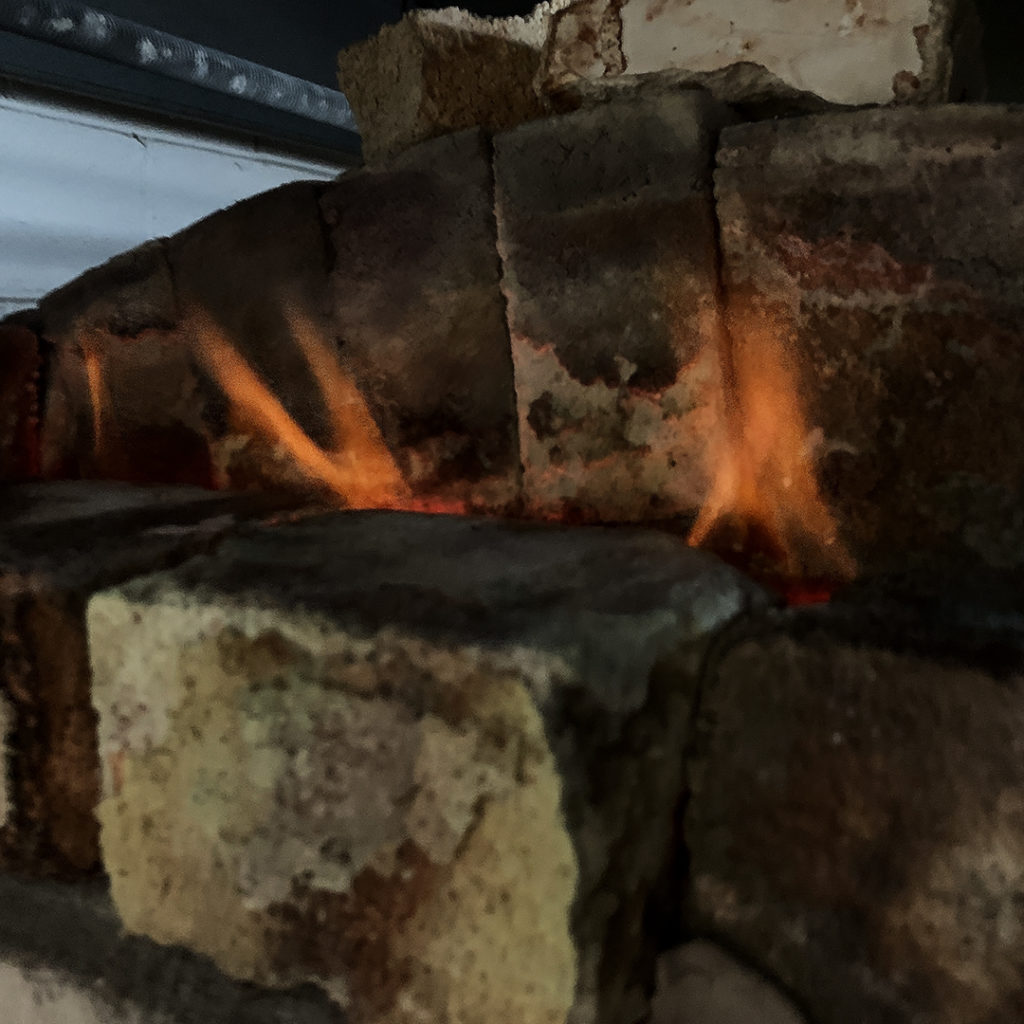Towards the end of yesterday’s LILLSTREET 3-DAY SODA-FIRING WORKSHOP, my students got the chance to load the soda mixture into the kiln. When the kiln gets up to cone 8, it’s time to mix it up and then start scooping & inserting the mixture into the kiln. I like to use a long angle iron to fill with the mixture – and then slide it into the kiln, dump it into the fire box, and then watch the flames shoot out!!! It’s a lot of work, but all part of the soda-firing process. I think they all enjoyed the experience. So now after several rounds of adding soda, the kiln has been turned off and it cooling all day today! They’ll return tomorrow night to open & unload the kiln… do some kiln cleaning & shelf maintenance… and then we’ll all get to look at their new soda-fired masterpieces!!!


















